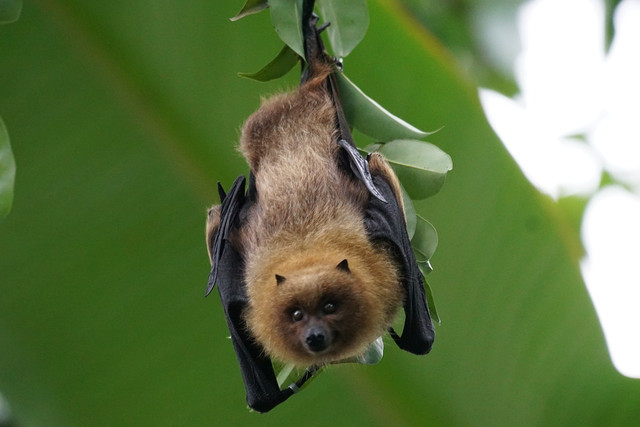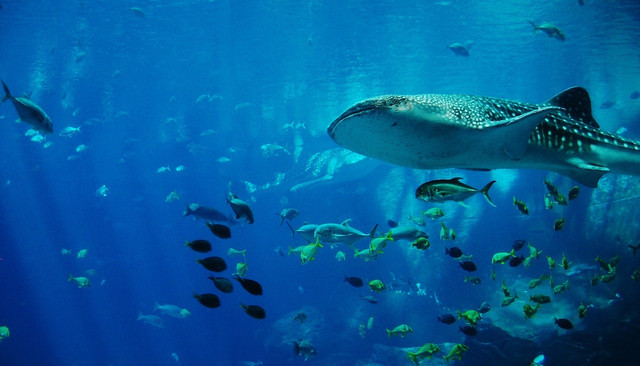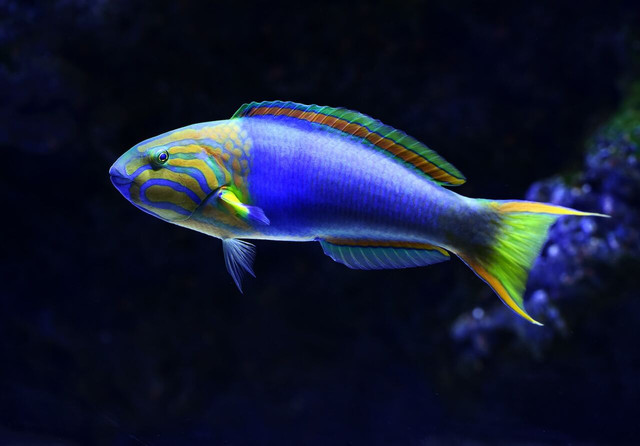Here we look at several examples of convergent evolution which help to explain how species of different kinds and origins can evolve similar traits despite the odds.
Convergent evolution is a biological process where unrelated organisms develop similar traits or features to adapt to similar environmental conditions.
This phenomenon is widespread in nature, and its study provides crucial insights into the evolutionary mechanisms that drive the development of complex life forms.
We’ll explain some fascinating shared structures of:
- Sharks and Dolphins
- Marsupials and placental mammals
- Cacti and euphorbias
- Bacteria and archaea
- Fungi and oomycetes
What Is Convergent Evolution, and Why Is It Important?

(Foto: CC0 / Pixabay / Pixel-mixer)
Convergent evolution is when unrelated organisms develop similar traits. This occurs when multiple species occupy similar ecological niches and adapt in comparable ways to similar selective pressures.
Bats, birds and insects, for example — despite not being closely related — have all independently developed wings to fly. Convergent evolution is significant because it provides evidence for the role of natural selection in shaping the natural world. Scientists can gain insights into how organisms adapt to their environments and how these adaptations drive evolutionary change by studying convergent evolution.
For instance, in the biology journal Interface Focus, researchers highlight that convergent evolution allows them to demonstrate adaptation by showing that the fit between organism and environment has evolved independently multiple times. This strengthens the evidence for adaptation and enables researchers to draw more robust conclusions about the adaptive nature of specific traits.
Read more: Speciesism: What Does It Mean and How Can We Prevent It?
The counterpart to convergent evolution is divergent evolution. Here’s a quick summary of their differences:
- Divergent evolution is when closely related organisms evolve different traits due to being subjected to different selective pressures. This happens when a population is divided into two or more groups. As time passes, the populations become increasingly different from one another. For example, Darwin observed that the finches in the Galápagos Islands evolved different beak shapes to exploit different food sources — an example of divergent evolution.
- Convergent evolution, on the other hand, occurs when unrelated organisms evolve similar traits in response to similar environmental pressures. Even though they evolved independently, these organisms may appear very similar in the end.
Convergent Evolution Examples in Animals



(Foto: CC0 / Pixabay / JimmyDominico)
1. Sharks and dolphins
Sharks and dolphins are two very different types of aquatic animals, but they share a number of physical and behavioral similarities that have arisen through convergent evolution. Both groups have evolved streamlined bodies to reduce drag in the water, as well as a dorsal fin and a tail fin for swimming.
Despite their similarities, there are also significant differences between sharks and dolphins, such as the fact that sharks are fish while dolphins are mammals.
Learn more: 6 Wholesome Shark Facts (Plus A Surprisingly Creepy One)



(Foto: CC0 / Unsplash / Christine Mendoza)
2. Marsupials and placental mammals
Marsupials and placental mammals are two distinct groups of mammals that evolved independently of each other but have evolved similar traits through convergent evolution. The main difference between the two groups is that marsupials give birth to underdeveloped young, which complete their development in a pouch, while placental mammals have a placenta that nourishes the developing fetus.
Although marsupials and placental mammals have distinct differences, they have developed comparable characteristics such as gliding, jumping, and burrowing. The sugar glider — a marsupial and one of the cutest exotic animals in the world — and the flying squirrel, a placental mammal, have both evolved gliding membranes to enable them to glide between trees. Similarly, the marsupial mole and the placental mole have both evolved specialized forelimbs for digging.
Convergent Evolution Examples in Plants



(Foto: CC0 / Pixabay / SBVguenter)
3. Cacti and euphorbias
Cacti and Euphorbias are two types of plants that have developed similar adaptations to thrive in arid environments through convergent evolution. They both have fleshy stems that store water and leaves that have been transformed into spines to reduce water loss through transpiration. Furthermore, they both have shallow root systems that can rapidly absorb water when it is accessible.
Their similarities may be harder to notice than in animals because there is a tendency to overlook plants and their importance in our daily lives because of a phenomenon known as plant blindness. However, on closer inspection, both cacti and succulent spurges have developed thicker stems as a way to store moisture during dry periods.
This strategy involves reducing the size of leaves so that the stem becomes the primary or only surface for photosynthesis (known as cladophyll). Thicker stems are better suited for arid climates as they have a reduced potential for water loss. And both have achieved this goal despite their seemingly different origins.
Convergent Evolution Examples in Microorganisms



(Foto: CC0 / Pixabay / adege)
4. Bacteria and archaea
Bacteria and archaea are two domains of single-celled microorganisms that have independently evolved many similar features, such as flagella for movement and the ability to fix nitrogen. For example, some bacteria and archaea have evolved a similar mechanism for movement, using flagella to propel themselves through their environment.
They also share similar methods of energy production, such as photosynthesis and chemosynthesis. However, while they share many similarities, bacteria, and archaea have distinct differences in their genetic makeup and biochemical processes. The study of convergent evolution in microorganisms can provide insight into the fundamental mechanisms of cellular biology and evolution.
5. Fungi and oomycetes
Fungi and oomycetes (a form of water mold) are two groups of organisms that have independently evolved similar lifestyles and ecological roles, such as decomposing dead organic matter and forming mutualistic relationships with other organisms. However, while they may seem similar, they are actually quite different in their biology and genetics. Fungi are more closely related to animals than to plants, while oomycetes are more closely related to algae.
Fungi reproduce using spores, while oomycetes reproduce using motile cells called zoospores. Despite these differences, both groups have evolved to play important roles in ecosystems around the world, and the study of convergent evolution in fungi and oomycetes can help us understand the diversity of life on Earth.
Learn more about the fascinating kingdom of fungi: Mushroom Mycelium: 7 Sustainable Superpowers
Homologous vs Analogous Evolution Structures



(Foto: CC0 / Pixabay / PublicDomainPictures)
When studying convergent evolution, it is important to distinguish between homologous and analogous structures.
- Homologous structures are those that have a similar embryonic origin, because they share a common ancestry, even if they have different functions in different organisms. Only species that are related can share homologous structures, and those structures might even look quite different externally. The arms of a chimpanzee and a human are homologous structures.
- Analogous structures are those that have a similar function but do not have a similar embryonic origin. They might look very similar and fulfil almost the same function, but they do not arise from a shared ancestry. The fins of penguins and fish, are examples of analogous structures.
The study of homologous and analogous structures is significant because it helps us understand the relationship between form and function in organisms and how different species have adapted to their environments over time.
Takeaways



(Foto: CC0 / Unsplash / David Clode)
Convergent evolution is an intriguing phenomenon that occurs in many organisms, providing insight into the mechanisms of evolution and adaptation. Through studying convergent evolution, we can understand how organisms have independently developed similar traits and behaviors in response to comparable environmental pressures.
Examples of convergent evolution, including those found in marsupials and placental mammals, bacteria, and archaea, showcase the diversity and complexity of life on Earth, as well as the impressive adaptability of organisms to changing conditions.
Another example of nature’s stunning “designs”:
Read more:
- What Is Ecological Succession? Definition, Examples, and Types
- The Gaia Hypothesis: What Does It Mean for Life on Earth?
- The 3 Types of Biodiversity Explained
Do you like this post?








